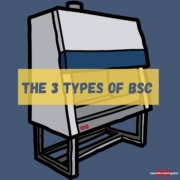How to choose the best lab blender for your microbiology lab ?
Buying a new lab blender is usually not a financially or organizationally perilous event for a microbiology lab. However, choosing the wrong lab blender could prove to be quite… “annoying” for the peace of the laboratory.
In this article, we will review all the criteria to consider before purchasing a new blender.
Contents:
Best Lab Blenders
The best lab blender food microbiology
We polled the SuperMicrobiologists.
Here are their favorite lab blenders
What is a lab blender used for?
If you are on this page, you likely already know what a microbiology lab blender is used for… But in brief, a lab blender is an instrument used to homogenize a matrix (often food) in a diluent to extract microorganisms (bacteria, yeasts, and molds).

Here we talk about “homogenizer blenders,” but when questioning microbiologists on LinkedIn, it becomes clear they use a multitude of names for this… instrument:
Microbiologists often use the term “stomacher” (which is actually the brand name of the first Stomacher® blenders).
Other variants include: “paddle homogenizer” or “peristaltic homogenizer.”
There are no right or wrong usages, but to make it simple, we will use “lab blender” in the rest of the article.
Technical Characteristics of the Laboratory Blender
Adjustable Blending Duration
This parameter should (normally) not pose a problem, but ensure that all your required blending durations are available.
Adjustable Blending Power
Depending on your matrices, you may need different blending powers. Manufacturers typically offer 2 or 3. The power selection can be made via a program choice or by adjusting the paddles (or both). The best approach is to test it in your lab with your matrices.
Compatibility with All Bag Sizes
Ensure that you can blend all volumes and bag sizes you have.
For the classic 400ml, there should be no issue, but for the small 80ml (wipes or sponges), do the paddles adjust (easily) to homogenize well? Also, some labs blend 2 bags at once.
For very large volumes (375g), larger blenders are often required.
Compatibility with Filter Bags
When bags have a filter (side or full-page), the liquid may rise above the closing point of the blender door.
But is this really an issue? It’s up to you to test and see.
Usage Characteristics of the Lab Blender
Ease of Use of the Lab Blender
There are 2 essential points to check:
- Is the bag easy to position? On some lab blenders, the bag must be placed neither too low nor too high; a small stop can facilitate handling.
- Does the door close and open easily? The action may be repeated hundreds of times a day, so it must be smooth, intuitive, and effortless.
These points should be tested by the users. Even a minor change like a new blender is never simple; it needs to be accompanied, explained, and validated by the users.
Lab Blender Noise Level
The new generation of paddle homogenizers is much quieter than the old one. This point is important because, with the pace of dozens or even hundreds of samples per day, it can cause real problems in the lab.
However, not all silences are equal; the best is to test the blender in your lab with your matrices. Always test with a sample in the blender!
Cleanability of the Lab Blender
We don’t want to jinx it, but a bag will inevitably break at some point… and even more than once!
You need to study the cleanability of the inside of the blending area. It can quickly become a microbial nest in contact with your samples.
Are there any corners, are they accessible?
Are the paddles removable?
Is there a recovery tray, and is it easily manageable?
These points should be tested during a trial phase.
Size of the Lab Blender (even if size does not matters, right ?!)
If you have limited bench space, this argument can be important. The size differences between available models today are… significant!
Lab Blender Weight
Sure, we don’t move our blenders every day, but you will still need to regularly clean the bench under the blender, which is why weight remains an important point… plus, it allows for free workouts!
Lab Blender Vibrations
During operation, your laboratory blender may cause the bench to vibrate, potentially affecting other instruments on the bench (such as gravimetric dilutors!).
For the test, you should perform it at the location where your blender will be placed.
Service for the Lab Blender
Replacement of Wear Parts for the lab blender
Does the blender have wear parts, such as:
- Door seals
- Paddle clips
- Others
If so, how often do they need to be replaced? Can the lab do it, or does the manufacturer need to be called in?
Don’t hesitate to ask for prices before buying the lab blender.
Actions in Case of Breakdown
A broken lab blender can paralyze a lab.
In such a case, what does the manufacturer offer:
On-site intervention, if so, in how long?
Can a replacement blender be sent within 1 or 2 days while the repair is being done?
Trust in Your Supplier!
There is one last argument, which applies to all technologies: the trust you have in your supplier!
This argument may seem subjective, but it is important and can be based on tangible criteria, such as:
- Is it easy to reach them by phone? Do you get them directly or through a voice server?
- Have you worked with them before? If not, ask another lab (on LinkedIn or via SuperMicrobiologistes)
- Are they responsive, do they quickly provide a solution in case of a problem?
You now have all the information to choose the perfect blender for your lab. It’s up to you!













Leave a Reply
Want to join the discussion?Feel free to contribute!